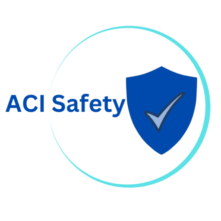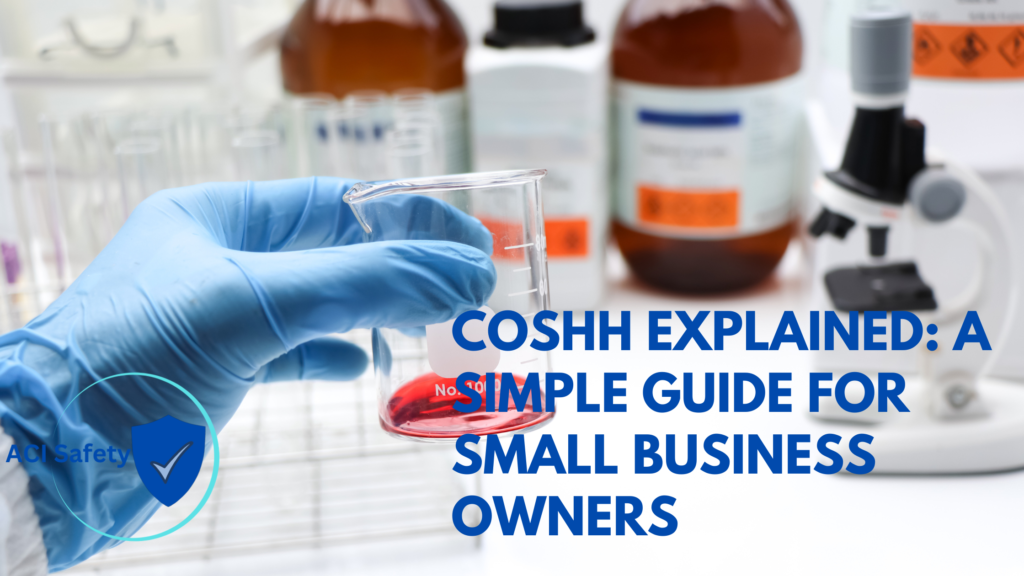Let’s talk about COSHH. Not the most exciting acronym in the world, I know. But if you run a small business in the UK, it’s something you need to get your head around.
The good news? It’s not as complicated as it sounds. And I’m not here to drown you in legal jargon or hand you a 50-page manual. I’m here to explain COSHH in plain English, with a bit of humour, and some practical advice you can actually use.
Whether you’re a one-person cleaning business, a café owner, or running a small construction firm, COSHH is probably something you need to be aware of—even if you’re not dealing with bubbling test tubes and hazmat suits.
Let’s break it down.
What does COSHH stand for?
COSHH = Control of Substances Hazardous to Health.
It’s a set of regulations designed to protect people from getting ill or injured through exposure to hazardous substances at work.
So far, so sensible.
You might be thinking, “Yeah, but we only use a few cleaning sprays and a bit of paint now and again.” That still counts. You don’t have to be manufacturing explosives to fall under COSHH.
What counts as a hazardous substance?
This is where a lot of people get caught out. COSHH covers a lot more than just scary chemicals.
We’re talking about:
- Cleaning products (yes, even the ones from the supermarket)
- Dusts (wood, flour, plasterboard)
- Fumes and vapours (from things like paint, adhesives, or welding)
- Mists and sprays
- Gases
- Biological agents (if you work in healthcare or deal with bodily fluids)
- Any substance that could harm someone’s health—through skin contact, breathing it in, swallowing it, or even getting it in your eyes
Basically, if there’s a substance in your workplace that could make someone ill or injured, it’s probably covered by COSHH.
And yes, flour dust is a thing. Bakers can get occupational asthma. It’s real.
Do small businesses need to worry about COSHH?
Short answer: yes.
The COSHH regulations apply to every business in the UK, no matter how big or small. If you’re an employer—or even if you’re self-employed and exposing yourself to risk—you’ve got a legal duty to assess and control those risks.
So whether you’ve got a team of 10 or it’s just you and a dog named Dave, you still need to think about COSHH.
And no, just saying “we’re careful” doesn’t count as a risk assessment.
What does COSHH compliance actually look like?
Alright, let’s get into the nitty gritty. COSHH compliance means doing a few key things:
1. Find out what substances you’re using
Go through your cupboards, vans, kits, storage sheds—wherever you keep stuff—and make a list of anything that might be hazardous.
Look for warning symbols on the label (those red diamond ones), and request safety data sheets (SDS) from your suppliers if you don’t already have them.
That’s your starting point.
2. Do a COSHH assessment
This is where you assess the risk. Don’t panic—it doesn’t have to be War and Peace.
You’re just looking at:
- What the substance is
- How people might be exposed
- What harm it could cause
- What you’re doing to stop that harm
It could be as simple as:
“Using bleach to clean toilets once a day. Risk of skin/eye irritation and fumes. Staff use gloves, label bottle, and store in locked cupboard. Trained on use.”
There. That’s a COSHH assessment. Doesn’t need a gold frame.
Of course, if you’re using lots of substances or your processes are more complex, your assessments will need more detail—but it’s still the same idea.
(I’ve got downloadable templates for this if you want to save yourself some hassle.)
3. Put sensible controls in place
This bit’s important. Once you’ve assessed the risks, you need to do something about them.
That could mean:
- Swapping a product for a safer alternative
- Providing gloves, goggles, or masks (and showing people how to use them properly)
- Improving ventilation in your workspace
- Making sure stuff is clearly labelled and stored safely
- Setting rules around when and how a substance is used
The goal is to stop people being harmed. Sounds obvious, but you’d be surprised how often this gets overlooked.
Also, PPE should be your last line of defence, not your first. If you can remove the risk altogether, do that first.
4. Make sure people know what they’re doing
Even if you’ve done your risk assessments and control measures, it all falls apart if people don’t know how to use them.
So make sure anyone handling hazardous substances knows:
- What the risks are
- How to use them safely
- What PPE they need
- What to do if something goes wrong
This doesn’t need to be a full-day training course with a certificate and a buffet. A quick briefing or chat with a checklist can be enough—as long as it’s clear and practical.
And don’t forget new starters. They won’t magically absorb this stuff by standing near the mop bucket.
5. Keep everything up to date
Businesses change. You get new products, hire new people, move premises. So your COSHH assessments should be reviewed regularly.
If nothing’s changed, once a year is fine for a review. But if you switch products or bring in new equipment, check things over and update your assessments.
Keep a record of what you’ve done, when you did it, and who it applies to.
What about safety data sheets?
You’ll hear people banging on about SDSs like they’re the be-all and end-all. And yes, they’re important. They tell you what’s in a substance, what the risks are, and what to do in an emergency.
But they’re not the same as a COSHH assessment.
An SDS is from the manufacturer—it’s generic. Your COSHH assessment needs to be about how you use that substance in your business. You might use something in a tiny, poorly ventilated space where the risks are higher. Or you might use it in tiny amounts where the risk is low.
That context matters. So don’t just print the SDS and call it a day.
Common COSHH mistakes (and how to avoid them)
Here are a few clangers I see all the time:
- Using unlabeled spray bottles – If you decant chemicals, label the bottle properly. Otherwise, it’s a guessing game (and not a fun one).
- Keeping out-of-date products – If it’s been in the back of a cupboard since 2008, it’s time to bin it.
- Assuming shop-bought = safe – Bleach from Tesco is still bleach. Doesn’t matter where you bought it.
- Having a “COSHH folder” nobody’s read – The paperwork is only useful if it’s used.
- Ignoring short-term exposure – Even brief contact can cause harm if it happens often enough.
If you’re not sure what you’re doing is enough, that’s exactly what I’m here for.
What if I’m the only one in the business?
If you’re self-employed and work alone, COSHH still applies. You’ve got a legal duty to protect your own health (yes, even from yourself).
You might not need a huge file of assessments, but you do need to think about the risks and how you’ll manage them.
Write it down. Keep it simple. You’ll thank yourself later.
Can I outsource this?
Yes. And a lot of small businesses do, because they’d rather spend time doing what they’re good at than learning the ins and outs of chemical hazard symbols.
That’s exactly what I do—remote consultancy for small businesses, with downloadable templates, one-to-one advice, and practical support.
I won’t bury you in paperwork or try to sell you stuff you don’t need. Just clear, realistic help so you can tick the boxes, keep people safe, and get on with running your business.
Quick checklist to keep you on track
Here’s a handy COSHH checklist you can run through:
- Have you identified all hazardous substances in your business?
- Do you have safety data sheets for each one?
- Have you done a COSHH assessment for how you use each substance?
- Have you put sensible controls in place (PPE, storage, ventilation)?
- Have staff been trained or briefed on what to do?
- Is everything labelled properly?
- Are your records up to date?
- Are you reviewing things when anything changes?
If you’ve ticked all those off, you’re on the right track. If not, now’s a good time to get started—and if you need a hand, I’m here to help.


Pingback: Who Is Responsible for COSHH Assessments in a Small Business? – acisafety.co.uk
Pingback: COSHH Assessment for Remote Workers or Home-Based Businesses – acisafety.co.uk